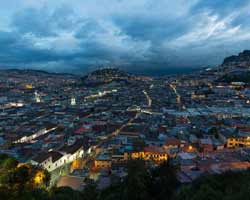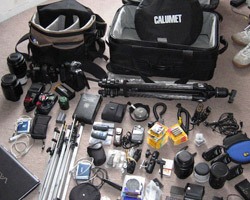I love to travel. Seeing different parts of the world is so eye opening, educational, and fun! Every time I plan a trip, I start getting excited about the pictures I'll take while traveling. I've got seven tips for travel and vacation photography to help you think outside of the snapshot.
1. Go online to discover unique locations.
Before you travel, get online and check out the hot photo spots in the city or surrounding areas ahead of time. You may know about the iconic photo opportunities, but what about the lesser-known spots? In Austin, Texas most people plan to visit the State Capitol or the bats that live under South Congress Bridge, but have you heard of the Cathedral of Junk? It's a pretty impressive structure hidden in Austin, and it goes along with the city slogan: Keep Austin Weird.

2. Approach a scene from different angles.
When I went to San Francisco a few years ago, I knew I wanted to photograph the Golden Gate Bridge in all its splendor. If I had just shown up at the bridge, I would have had the "passers by" view. Instead I did some research (see tip #1) and got driving directions to varying photo spots that offered different angles and perspectives. South Vista Point, Baker Beach, and Fort Point were a few of my stops in capturing the grandeur of the bridge.

3. Get IN the pictures.
We all like to take pictures of the fun places we've visited, but getting in those destination photos will be more interesting to look at down the road. Plus, it proves you were truly there! You don't have to always stand, pose, or smile — do something fun to mark the excitement of being somewhere different. My husband and I traveled to Alaska, and the image below shows how happy I am to be taking pictures at the top of the Alaskan mountains.

4. Keep lenses simple.
When I travel, I want to relax and have fun while still taking all sorts of interesting pictures. I don't want to carry my arsenal of lenses and gear, so I take my favorite travel lens — 35mm prime. I love primes. They are the crispest lenses, and the 35 mm is wide enough to capture scenery and buildings when up close. It's light and small, and I love it. A great versatile alternative is a 24-7o mm that will zoom in and out; it just isn't as tack sharp and a bit heavier.
5. Be careful with your gear.
If you are traveling to more impoverished parts of the world, walking around with a big fancy camera may make you more of a target for thieves. I've seen some photographers go as far as to "trash up" their cameras with duct tape over the brand name. I travel with a camera bag that doesn't look like a camera bag, and feel I'm less of a target then. Aim to keep your camera always on your person to make sure you have a good handle on it.
6. Dump images.
It may be a hassle, but if you can "dump" your images from your camera card to a hard drive or computer at the end of each day, you aren't at as much of a risk of losing what you've taken. Traveling from day to day, things can get lost. I had a friend who forgot her camera on a train, and she never saw it or the trip images again. Dumping doesn't mean you need to delete the images, too (if you have a big enough card), but just in case something happens, you have a backup. You can also upload them to an online hosting site for extra protection.
7. Be brave and get creative.
After taking a handful of "safe" shots of fun locations, think outside the box and get creative. Drag your shutter to show movement of people or cars, or use the foreground objects to frame the background scene. Push yourself to do something different that you don't feel 100% comfortable with yet. It’s the only way to get better.

If you want to take better photos, check out NYIP’s photography courses. We promise to make you a better photographer!






